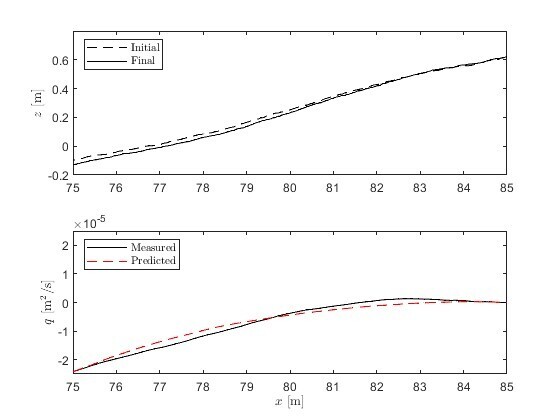B. E. Larsen1*, B. Öz1
1 Department of Civil and Mechanical Engineering, Technical University of Denmark, Denmark
* Corresponding author: bjelt@dtu.dk
Introduction
Cross-shore sediment transport remains difficult to predict for practical engineering models. One of the challenging regions for such models is the swash zone, where many models use so-called distribution methods to predict the sediment transport rates from the last point of the hydrodynamic and sediment transport models to the point of maximum run-up (van Rijn, 2009). Other types of models for swash zone transport rates have been developed, and many of these are build on a so-called equilibrium slope (see e.g. Chen et al., 2024). Both the distribution type models, and the equilibrium slope type models have, however, only been tested on a limited range of scenarios, and it is not known how well they perform across a wide range of wave conditions with a wide range of initial cross-shore profile shapes and sediment characteristics.
Objective and Methods
This work is an extension of Öz (2025) and aims at evaluating existing types of swash zone sediment transport models for a wide range of conditions as well as formulating a new type of model (as a result of the evaluation). This will be achieved by assembling a large experimental database for testing, formal mathematical analysis and idealized scenarios. A new model will be suggested which avoids some of the identified issues with the existing models and the experimental database will be used to tune model parameters.
Results
In many of the equilibrium slope type models the sediment transport is offshore directed if the slope is steeper than the given equilibrium and onshore directed if it is milder. While this appears intuitive, there are many examples where a constant slope has been reached for part of the swash zone, but the transport rate in this region is not zero (Larsen et al., 2023). The beach is in other words eroding or accreeding, but maintaining its slope. The reason for this is that erosion/accretion is governed by the gradients of the transport rates rather than the transport rates. Secondly, by means of mathematical analysis and idealized scenarios it is proved that some models will not tend towards the equilibrium slope as the second derivative of the transport rates have the wrong sign. It is demonstrated that convergence towards equilibrium can be achieved with a model for the gradients of the transport rates rather than the sediment transport rates themselves. Using optimal coefficients, the new model is demonstrated to match experimental results well as demonstrated in the accompanying figure.
Financial support is acknowledged from the European Research Council, Horizon 2020 Research and Innovation Program (Grant Agreement No. 101163534).

Measured and predicted sediment transport rates from the erosive condition of van Rijn et al. (2011)
References
Chen, W., van der Werf, J. J., & Hulscher, S. J. (2024). Practical modelling of sand transport and beach profile evolution in the swash zone. Coast. Eng., 191, 104514.
Larsen, B. E., Carstensen, R., Carstensen, S., Fuhrman, D. R., et al. (2023). Experimental investigation on the effects of shoreface nourishment placement and timing on long-term cross-shore profile development. Coast. Eng., 180, 104258.
Öz, B. Assessment and Improvement of Cross-Shore Sediment Transport Models for the Swash Zone (2025). MSc. thesis. Technical University of Denmark.
van Rijn, L. C. (2009). Prediction of dune erosion due to storms. Coast. Eng., 56, 441–457.
van Rijn, L., Tonnon, P., & Walstra, D. (2011). Numerical modelling of erosion and accretion of plane sloping beaches at different scales. Coast. Eng., 58, 637–655










